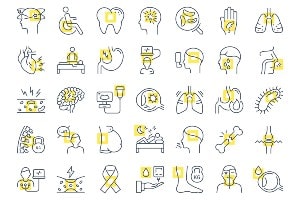About Plan B Contraception (Contraceptive Measures After Unprotected Sex)

Learn about the disease, illness and/or condition Plan B Contraception (Contraceptive Measures After Unprotected Sex) including: symptoms, causes, treatments, contraindications and conditions at ClusterMed.info.
Plan B Contraception (Contraceptive Measures After Unprotected Sex)

| Plan B Contraception (Contraceptive Measures After Unprotected Sex) |
|---|
Plan B Contraception (Contraceptive Measures After Unprotected Sex) InformationIntroduction to birth controlIf a woman is sexually active and she is fertile and physically able to become pregnant, she needs to ask herself, "Do I want to become pregnant now?" If her answer is "No," she must use some method of birth control (contraception). Terminology used to describe birth control methods includes:
How does the morning after pill work?Depending upon the time during the menstrual cycle that the emergency contraceptives are taken, these may prevent pregnancy by blocking the implantation of the fertilized egg in the uterus, by inhibiting ovulation, or by interfering with fertilization of the egg.
What are the side effects of the morning after pill?
What is emergency hormonal contraception (morning after pill)?Emergency hormonal contraception is sometimes called "the morning after pill" or "postcoital contraception," although these are not the preferred terms, and actually can be misleading. It is actually a short course of the hormones found in oral contraceptives taken at a high dose. The exact regimen (the number of pills and the number of days) depends on the type of oral contraceptive used. What is emergency IUD?Like the high dose of oral hormonal contraceptive, an IUD blocks the implantation of the fertilized egg in the uterine wall. Emergency IUD insertion can also be used to prevent a pregnancy after unprotected sex.
What is the dosage, and what types of the morning after pill are available?The most common type of emergency hormonal contraception involves the administration of the progesterone hormone levonorgestrel in two doses (marketed as Plan B in the U.S.). Another formulation for emergency hormonal contraception uses estrogen along with levonorgestrel, but levonorgestrel-only medication may be more effective and causes less nausea compared to estrogen-containing products.Clinical trials using low doses of mifepristone (known earlier as RU-486, sometimes called "the abortion pill") have shown that this agent is extremely effective as an emergency contraceptive when taken prior to ovulation, but it has not been approved for this use in the US. Mifepristone (Mifeprex) has been approved, in much higher doses, for terminating a pregnancy of less than 49 days' duration and must be taken under a physician's supervision. Another type of anti-progestin medication that is similar to mifepristone in its structure and actions is known as ulipristal acetate. Ulipristal acetate (Ella) is marketed for emergency contraception in Europe and was approved by the US FDA in August 2010 for use in the US for emergency contraception up to 120 hours after intercourse. It is available by prescription only.How effective is the morning after pill? Although effectiveness of the oral contraceptives are dependent to some extent upon how soon after unprotected intercourse they are taken, efficacy studies have generally reported pregnancy rates of 0.2% to 3% with use of oral emergency contraception. Does the morning after pill protect against STDS? Emergency contraceptive pills do not protect women from sexually transmitted diseases (STDs). Can the morning after pill be used as a primary form of birth control? Emergency hormonal contraception or the morning after pill is not meant to be a primary birth control method. Once the emergency is over, a woman should receive proper counseling so that she can select an effective and appropriate contraceptive method to use on a regular basis if she continues to be sexually active. |
More Diseases
A | B | C | D | E | F | G | H | I | J | K | L | M | N | O | P | Q | R | S | T | U | V | W | X | Y | Z
Diseases & Illnesses Definitions Of The Day
- Noncancerous Colloid Thyroid Nodule (Thyroid Nodules) ‐ How are thyroid nodules diagnosed?, Introduction to thyroid nodules …
- Skin, Laser Resurfacing (Laser Resurfacing) ‐ CO2 Laser Resurfacing, Complications of Laser Skin Resurfacing …
- Malignant Fibrous Histiocytoma (Bone Cancer Overview) ‐ Are there any treatments or medications that relieve bone cancer pain? …
- Double Vision ‐ Is it possible to prevent double vision?, What are the symptoms and signs of double vision? …
- Ageusia (Taste Disorders) ‐ Are taste disorders serious?, Can taste disorders be treated? …
- Autism Screening and Diagnosis ‐
- Alpha-fetoprotein Blood Test ‐ In which situations are high blood (serum) levels of AFP used as a tumor marker? …
- Polymyalgia Rheumatica ‐ How do health care professionals make a diagnosis of polymyalgia rheumatica? …
- Stump Appendicitis (Appendicitis) ‐ Appendicitis definition and facts, Are there long-term consequences of appendectomy? …
- Gonorrhea (Gonorrhea In Women) ‐ Gonorrhea facts, How is gonorrhea diagnosed?, What are sexually transmitted diseases (STDs)? …